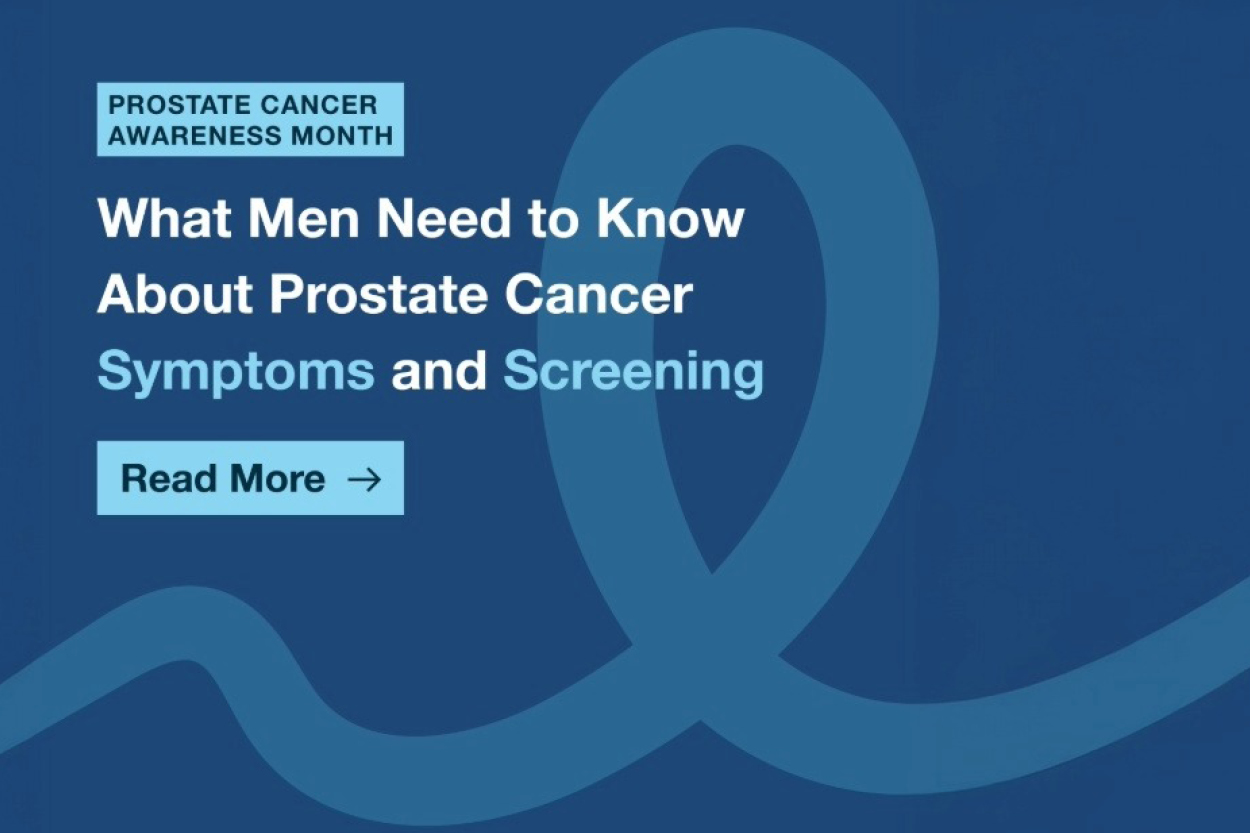What Men Need to Know About Prostate Cancer
Prostate cancer awareness is essential for early detection, effective treatment, and saving lives. It’s the second most common cancer among men in the United States, yet many people know little about the risk factors, signs, and screening guidelines. During Prostate Cancer Awareness Month, we’re here to help men and their families better understand this disease and the steps they can take to protect their health.
Understanding Prostate Cancer
The prostate is a small gland in the male reproductive system that helps produce semen. Prostate cancer begins when cells in the prostate grow out of control. Most cases grow slowly, but some types are more aggressive. That’s why understanding your risk and screening options is key to catching it early.
Risk Factors to Know
Several factors may increase a man’s risk for prostate cancer, including:
- Age – risk increases significantly after age 50
- Family History – having a father, brother, or son with prostate cancer doubles your risk
- Race – black men are more likely to develop prostate cancer and to have more aggressive forms
- Lifestyle Factors – obesity and poor diet may also play a role
If you or someone you know has one or more of these risk factors, talk to a doctor about an earlier or more frequent screening.
Symptoms and Early Detection
In its early stages, prostate cancer often doesn’t cause overly noticeable symptoms. However, as it progresses, symptoms may include:
- Early-Stage Symptoms
- Difficulty urinating
- Frequent urination, especially at night
- Weak or interrupted urine flow
- Blood in urine or semen
- Pain in the back, hips, or pelvis
- Late-Stage Symptoms
- Back pain
- Bone pain
- Erectile Dysfunction
- Fatigue
- Weight loss
- Weakness
Because symptoms may not appear until later, regular screening is essential.
Screening: When and How
The most common screening tools include a PSA blood test and digital rectal exams.
PSA Blood Test: Measures the level of prostate-specific antigen in the blood. Elevated levels may indicate cancer or other prostate conditions.
Digital Rectal Exam (DRE): A quick physical exam where a doctor checks the prostate for abnormalities.
Screening guidelines vary, but many experts recommend starting conversations with your doctor at age 50 or earlier if you’re high-risk.
Diagnosing and Treating Prostate Cancer
If your screening shows abnormal results, your provider may recommend imaging or a prostate biopsy. If cancer is confirmed, treatment may include:
- Active surveillance: monitoring slow-growing cancer with regular checkups
- Surgery: removing the prostate gland (prostatectomy)
- Radiation therapy: using high-energy rays to target and kill cancer cells
- Hormone therapy: reducing testosterone levels to slow cancer growth
- Chemotherapy: used for more advanced or aggressive cancers
- Immunotherapy: helping the body’s immune system recognize and attack cancer cells
Your care team will work with you to determine the best plan based on your cancer type, stage, and overall health.
Support for the Whole Journey
A prostate cancer diagnosis can be overwhelming, but you’re not alone. Our team is here to provide expert care, personalized treatment plans, and support every step of the way. This includes everything from diagnosis through survivorship.


